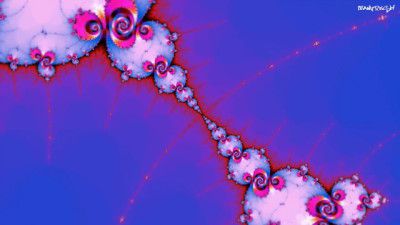- Qualcomm Launches Snapdragon 4 Gen 2 Mobile Platform
- AMD Launches Ryzen PRO 7000 Series Mobile & Desktop Platform
- Intel Launches Sleek Single-Slot Arc Pro A60 Workstation Graphics Card
- NVIDIA Announces Latest Ada Lovelace Additions: GeForce RTX 4060 Ti & RTX 4060
- Maxon Redshift With AMD Radeon GPU Rendering Support Now Available
Mandelbrot Fractal Zoomed in to 6.066+e228 = Hypnotic
Fractals, those neat designs that use an infinite number of identical patterns to generate something interesting to stare at, appear simple at the surface, but are in actuality insanely complex to understand. In some cases, such as with the famous Mandelbrot set, you almost have to be a mathematician (or at least, not me) in order to understand the very basics of how the design is built.
Fractals can be built from a simple shape, one that’s multiplied a couple or countless number of times to build a much more elaborate one. The most common comparison to this is a snowflake, where the same design repeats itself many times at a regular zoom and even more so at high magnification. While the Madelbrot set doesn’t look too uniform, it is in a lot of ways. I certainly can’t cover it in depth or even begin to comprehend most of it, so I’ll just link you to its Wikipedia page if you want to learn more.
If you’ve ever looked at the Mandelbrot fractal and thought, “Hmm, I’d love to zoom into that thing at 2^760 magnification”, then your wishes have been answered. This isn’t new, but thanks to Digg, it has some new life. A group of designers calling themselves Teamfresh, which specialize in creating nifty fractal videos, somehow executed a sequence that continually zooms into the Mandelbrot fractal for more than ten minutes. The result… is mesmerizing.
According to the video description, this sequence took about two days to set up, and about six months to completely render. If you want a lossless version of the video, they offer it on their website, but it weighs in at close to 2GB, so download at your own risk. Of course, if you want the effect of being on drugs without actually taking drugs, that could be 2GB well spent.

Two days to set up, and then six months to render, (could have been quicker but I did it in parts) resulted in around forty 1.9GB uncompressed .AVI files. I added watermarking, fx and time remapping, before multi-pass encoding the 80GB video in h264 (32,768 kbit/sec) and the audio in AAC.




